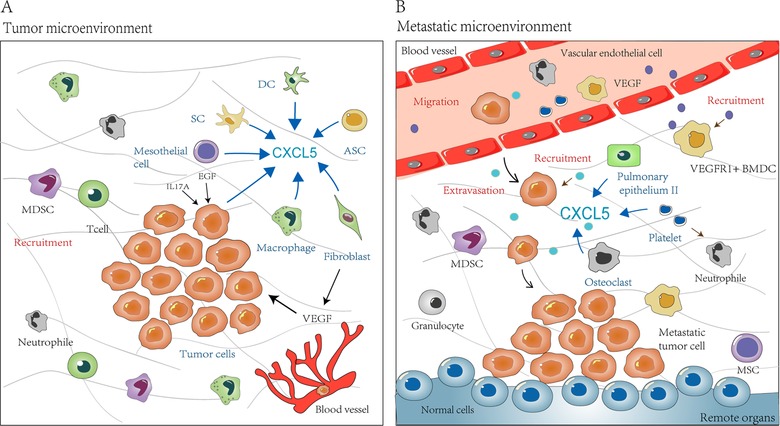Figure 1.

The sources and role of CXCL5 in TME and metastatic niche. (A) CXCL5 is derived from primary tumor cells and even tumor cells in the blood circulation. It is also secreted by some other host cells in TME, including fibroblasts, macrophages, mesothelial cells, SCs, DCs and ASCs. CXCL5 enriched in the microenvironment recruits immune‐related cells to tumors mass, such as neutrophils and MDSCs. Patients with high levels of CXCL5 have massive infiltration of T cells and macrophages, which in turn participates in immune responses. (B) Host cells in remote organs, such as pulmonary epithelium II, osteoclasts, and platelets, can secrete CXCL5 to help the formation of metastatic microenvironment, which is beneficial to tumorigenesis. In addition, in metastatic niche, CXCL5 can recruit tumor cells and immune cells, including VEGFR+ BMDCs, granulocytes, and MSCs, and thereby play an important role in tumor progression. Abbreviations: CXCL5, C‐X‐C motif chemokine ligand 5; SC, Schwann cells; DC, dendritic cell; ASC, Adipose tissue‐derived stem cell; MSC, Mesenchymal stem cell; MDSC, myeloid‐derived suppressor cell; BMDC, bone marrow‐derived dendritic cell; VEGF, vascular endothelial growth factor; VEGFR, vascular endothelial growth factor receptor 1; EGF, epidermal growth factor; IL17A, interleukin‐17A
